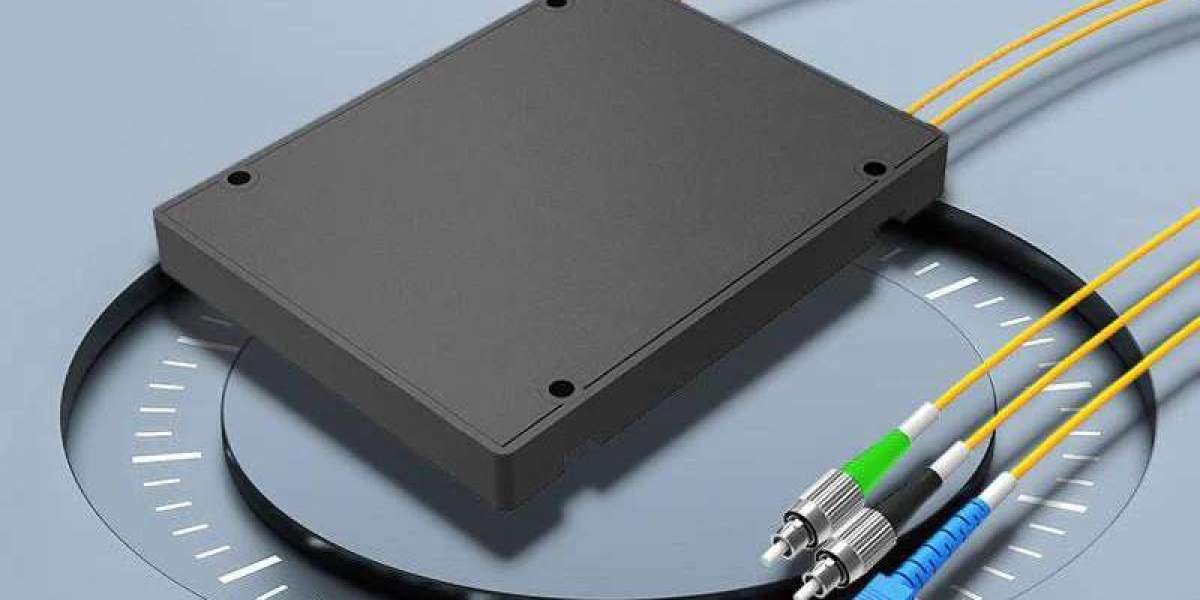article image source: ip-fiber.com (link)
Introduction
In today’s hyper-connected world, where data traffic continues to skyrocket due to 5G, artificial intelligence, and cloud computing, the demand for faster and more reliable networks is greater than ever. Dense Wavelength Division Multiplexing (DWDM) has emerged as a cornerstone of modern optical communication, revolutionizing how data travels through fiber-optic cables. By transmitting multiple light signals of different wavelengths through a single optical fiber, DWDM maximizes bandwidth utilization and enables ultra-high-speed, long-distance communication.
advertisement
Understanding the Core of DWDM
At its foundation, DWDM is a method of sending several data streams simultaneously, each using a unique wavelength (or color) of light. This allows a single optical fiber to carry dozens, even hundreds, of separate channels without interference. The result is an enormous increase in capacity and efficiency — a single fiber can handle terabits of data per second.
The technology has evolved dramatically since its early research days in the 1980s. Initially supporting only a handful of channels, it quickly advanced in the 1990s to commercial systems with dozens of wavelengths. Today, modern DWDM systems can transmit over 80, 96, or even more channels, each at speeds up to 400G or beyond. This progress has positioned DWDM as the backbone of global communication networks.
Diagram of DWDM Network with Mux/Demux and EDFAs
-image source: packetlight.com
How DWDM Systems Work
A DWDM system operates through three main processes — multiplexing, transmission, and demultiplexing.
At the transmitter side, multiple light signals at different wavelengths are combined using a wavelength division multiplexer. This composite signal travels through a single optical fiber, often spanning hundreds or thousands of kilometers. Along the way, optical amplifiers boost the signal’s strength to overcome natural loss during transmission. At the receiving end, a demultiplexer separates the combined light into its original wavelengths, and each signal is delivered to its intended destination.
Key components of a DWDM system include:
Transponders and muxponders, which map client data (like Ethernet or Fibre Channel) onto optical wavelengths.
Optical amplifiers, such as erbium-doped fiber amplifiers (EDFAs), which enhance long-distance transmission.
ROADMs (Reconfigurable Optical Add-Drop Multiplexers), which allow dynamic routing of wavelengths without manual intervention.
These components work together to deliver flexible, high-performance optical transport networks.

Example of a DWDM Connection Including: Transponder, Muxponder, ROADM and Mux/Demux
- image source: packetlight.com
Advantages of DWDM Technology
DWDM’s main strength lies in its ability to dramatically expand network capacity without installing new fiber infrastructure. Among its key benefits:
Massive bandwidth scalability: Up to 96 or more wavelengths per fiber, each carrying data rates from 10G to 400G and beyond.
Cost efficiency: Utilizes existing fiber, reducing the need for expensive new installations.
Protocol transparency: Supports multiple data types—Ethernet, OTN, SDH/SONET, Fibre Channel—simultaneously.
Long-distance reach: With optical amplification and forward error correction, DWDM can transmit data across continents and under oceans.
Flexibility and reliability: Each wavelength operates independently, making it easy to isolate faults or add capacity as needed.
DWDM vs. Other Multiplexing Technologies
To fully understand DWDM’s significance, it helps to compare it with other wavelength division multiplexing methods like CWDM (Coarse WDM) and FWDM (Filter WDM).
CWDM uses fewer, widely spaced wavelengths and is ideal for shorter, lower-cost links such as metro or access networks. It’s simpler and cheaper but limited in distance and capacity.
FWDM strikes a balance between CWDM and DWDM, offering moderate capacity and lower power consumption for metropolitan networks or enterprise connections.
DWDM, with its tightly spaced wavelengths and sophisticated optical amplifiers, dominates long-haul, high-capacity networks such as intercontinental cables, national backbones, and data center interconnects.
While DWDM requires more precise equipment and higher investment, its scalability and performance make it indispensable for networks that handle enormous volumes of data.
Applications of DWDM
DWDM technology powers many critical parts of today’s global infrastructure:
Telecommunications: It is the backbone of national and international trunk lines, ensuring high-speed connections across long distances.
5G networks: DWDM supports fronthaul, midhaul, and core connections with the bandwidth and low latency necessary for real-time communication.
Data centers and cloud computing: By linking geographically dispersed data centers, DWDM enables high-speed synchronization, backup, and load balancing—essential for cloud services.
AI and high-performance computing: Provides the low-latency, high-throughput connectivity required for distributed processing and massive data workloads.
Enterprise and financial systems: Used in sectors that demand secure and reliable transmission, from stock trading to telemedicine.
The Evolution and Future of DWDM
DWDM is not standing still. The technology is evolving toward even higher capacity, greater intelligence, and lower power consumption. Emerging trends include:
Flexible-grid and intelligent spectrum control: Moving beyond fixed wavelength spacing to dynamically allocate spectrum for optimal efficiency.
Silicon photonics and co-packaged optics (CPO): Integrating optical and electronic components at chip level, reducing energy use and enabling speeds of 800G, 1.6T, and beyond.
Hollow-core fibers: Guiding light through air instead of glass to cut latency nearly in half and boost capacity dramatically.
AI-driven networks: Using machine learning to predict errors, optimize power, and self-heal in real time, transforming networks into intelligent systems.
These frontier technologies are pushing DWDM beyond physical limits, ushering in what some call the era of Optical Interconnection 3.0 — networks that are not only fast but also smart, adaptive, and energy-efficient.
Challenges and Considerations
Despite its advantages, DWDM deployment presents challenges. It requires high-precision lasers, careful wavelength management, and expert network design. Power consumption, cost, and complexity remain key factors—particularly in regions where simpler solutions like CWDM suffice. However, as demand for bandwidth continues to grow, these challenges are increasingly outweighed by the benefits.
Conclusion
Dense Wavelength Division Multiplexing has transformed optical communication, unlocking the full potential of fiber networks. From submarine cables to cloud interconnections, DWDM enables the seamless flow of information that powers our digital world.
As innovation continues—with silicon photonics, hollow-core fibers, and AI integration—DWDM is evolving from a tool for data transmission into the intelligent nervous system of global connectivity. The future of communication will not only depend on how much data we can send, but on how intelligently and efficiently we can manage the light that carries it. DWDM stands at the heart of that transformation—paving the way toward a faster, smarter, and more connected planet.
Sources
What is DWDM? – IP Fiber (https://ip-fiber.com/blogs/news/what-is-dwdm)
DWDM Technology Explained: High-Capacity Optical Networking – PacketLight (https://www.packetlight.com/resources/articles/dwdm-technology-high-capacity-optical-networking)
FWDM vs. CWDM vs. DWDM: A Technical Deep Dive into Optical Networking Choices – Opelink (https://www.opelink.com/article/fwdm-vs-cwdm-vs-dwdm-a-technical-deep-dive-into-optical-networking-choices-i01428i1.html)
DWDM Frontier Technology: The Future of Optical Interconnection Beyond Physical Limits – HTFuture (https://htfuture.com/dwdm-frontier-technology-the-future-of-optical-interconnection-beyond-physical-limits/)
Thank you !

















































